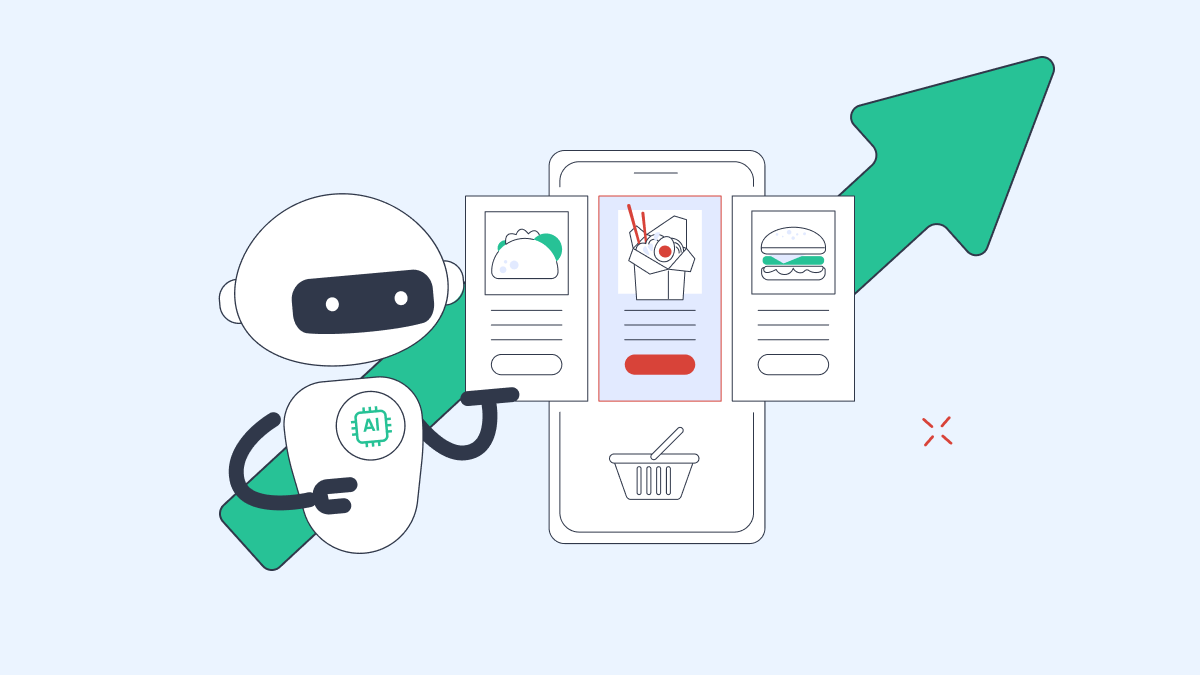.png)
How Smart QSRs Use AI to Win in 2025
From drive-thru AI to predictive kitchens, see how smart QSRs are compounding growth with AI across operations and customer experience.
.svg)

Walk into a QSR in 2025, and you’ll likely interact with AI before you speak to a single person.
From voice bots in the drive-thru to predictive kitchen prep, artificial intelligence isn’t an experiment anymore — it’s core infrastructure. The brands that are winning in quick service today aren’t asking if they should use AI. They’re asking where it moves the needle fastest.
Let’s break down how the smartest QSRs are putting AI to work right now.

1. Drive-Thru Voice AI: From Friction to Flow
Drive-thru wait times are still one of the biggest pain points for guests — and one of the biggest revenue risks for operators.
Enter Voice AI.
Solutions like Presto and SoundHound are now deployed across major QSR chains, trained on tens of thousands of real-world interactions. They handle orders with 95%+ accuracy, upsell effectively, and never miss a beat during lunch rush.
The result?
- Faster lanes
- Fewer errors
- Higher ticket size
One chain saw a 15% boost in drive-thru throughput after rolling out Voice AI at just 50 locations.
2. Personalized Offers That Actually Work
The era of generic promotions is over. AI-powered QSRs use transaction history, time of day, weather, and even customer mood to personalize what’s on the menu — and in the inbox.
- Got a loyalty member who always buys a flat white at 8:30am? The app nudges them with a 2-for-1 breakfast sandwich promo at 8:15am.
- Is it raining in Singapore? Push offers switch to hot food only, no ice cream distractions.
AI does this at scale, across thousands of customer profiles, without burning out your marketing team.
3. Predictive Kitchen Prep
Wasted food and delayed orders crush margins.
AI helps QSRs run smarter kitchens by forecasting demand down to the SKU, hour, and location. That means:
- Real-time stock alerts before items run out
- Prep queues adjusted dynamically based on traffic patterns
- Less spoilage, more consistency
In short: your kitchen gets proactive, not reactive.
4. AI for Customer Recovery
In 2025, ignoring a bad review means losing more than a customer. It means losing visibility.
AI-powered systems now detect which feedback needs a fast response — and what kind of response will actually retain the customer.
- A 2-star rating with no comment? Automated follow-up with a survey.
- A long rant about cold fries and rude staff? Escalated to ops lead with smart suggestions on how to recover.
Brands using AI for recovery are seeing CSAT scores climb by 20%+ in just a few weeks.
5. Smarter Scheduling & Staffing
Labor remains one of the biggest constraints in QSRs — both in cost and availability.
AI helps by forecasting when and where you need staff, based on real sales, traffic, and seasonality data. It even helps spot anomalies, like:
- Why one store always sees a dip at 2pm despite steady footfall
- Which locations are overstaffed for dinner on Tuesdays
This reduces burnout, increases service quality, and keeps labor aligned with revenue — not gut feel.
Why It Matters
The QSR brands thriving in 2025 aren’t just digitizing — they’re compounding. Every AI layer they add improves the next.
Voice AI makes ordering faster. That data improves upsell models. Upsell insights refine kitchen prep. Inventory signals tighten staffing. It’s a closed loop — powered by real-time decisions, not siloed teams.
The Cost of Waiting
According to Market.us, the global AI in QSR market will grow from $915M in 2024 to over $12B by 2034, with a 29.4% CAGR.
That means AI isn’t a differentiator for long — it’s the price of admission. The question isn’t whether your QSR brand will use AI. It’s whether you’ll use it well enough to stay ahead.

.webp)